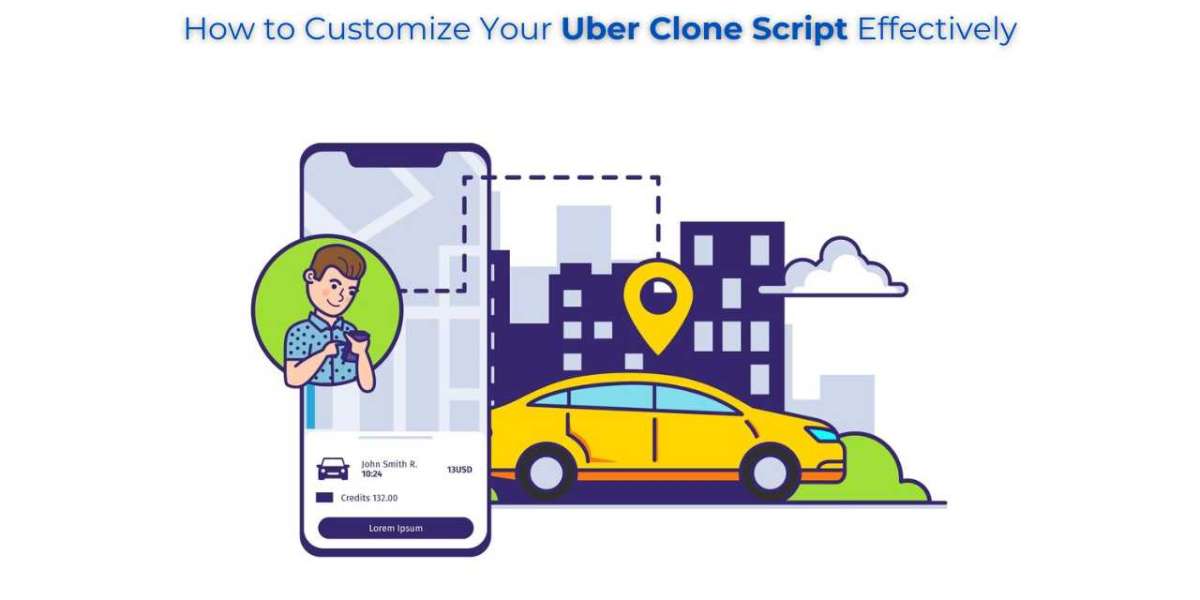If you're planning to start your own ride-hailing or on-demand service business, an Uber clone script can be a great starting point. However, to make your app stand out in a crowded market, simply using a basic clone isn't enough. Customization is key to making the app unique to your brand and meeting the specific needs of your users. In this blog, we'll walk you through how to effectively customize your Uber Clone Script to ensure it aligns with your business goals and delivers a top-notch user experience.
Why Customizing Your Uber Clone Script Is Important
Customization goes beyond just tweaking the app's colors or logos. It involves modifying the functionality, features, and design to better suit your target audience. Effective customization can help:
- Differentiate Your Brand: A customized app helps your brand stand out, making it more memorable to users.
- Improve User Experience: Tailoring the app to the needs of your users ensures they have a smooth and enjoyable experience, which can lead to higher retention.
- Incorporate Unique Features: You can integrate features that are specific to your business model and target market, offering something new that competitors might not have.
- Scale With Your Business: A well-customized app can grow with your business, adding new services and functionalities as needed.
Let’s break down the steps to customize your Uber Clone Script effectively.
Steps to Customize Your Uber Clone Script
1. Define Your Business Model and Objectives
Before diving into the technical aspects of customization, it's crucial to understand what your business model is and what objectives you want to achieve. Are you offering only ride-hailing services, or will you expand to other services like food delivery or package courier services?
Here’s what you need to define:
- Service Type: Will you focus on taxis, luxury cars, bikes, or food delivery?
- Target Audience: Are you catering to a specific demographic (e.g., eco-conscious consumers or business travelers)?
- Revenue Model: Will you charge a flat fee, per mile, or have subscription options?
By clearly defining your objectives, you can decide on the features and customizations that align with your business needs.
2. Customize the User Interface (UI) and Design
The design and user interface are among the most important elements of your app. A well-designed app is more likely to engage users, encourage loyalty, and improve your brand's recognition. The goal is to create an intuitive and user-friendly experience that’s visually appealing and easy to navigate.
Here’s what you should focus on:
- Branding: Incorporate your brand colors, logos, and fonts into the design to create a consistent look across your app.
- Simplicity: Keep the design clean and minimalistic. Avoid clutter and ensure that the app is easy to navigate for users of all ages and technical abilities.
- Custom Features: Add design elements that are unique to your business. For example, if you're offering a luxury car service, you can create a sleek, sophisticated design with premium features.
You can work with a skilled UI/UX designer to create a personalized experience that reflects your business and resonates with your audience.
3. Integrate Unique Features
An Uber Clone Script comes with basic features that replicate Uber’s ride-hailing model. However, to stand out and cater to specific customer needs, you should add unique features. These features can enhance the user experience and help you differentiate from competitors.
Here are some feature ideas to consider:
- Multiple Ride Options: Add different ride options such as economy, business, and luxury rides, or even offer bikes and scooters.
- Fare Estimates: Allow users to view an estimated fare before booking a ride.
- Split Fare Feature: Allow users to split the ride cost with other passengers, which can be helpful for group travel.
- Advanced Booking: Enable users to schedule rides in advance rather than just booking in real-time.
- Ratings and Reviews: Implement a comprehensive rating system that allows both drivers and passengers to rate each other. You can also incorporate feedback forms or in-app support.
- Multi-Language Support: To cater to a broader audience, add multiple language options so that users from different regions can use the app in their preferred language.
You can also integrate other services like food delivery, package courier, or cleaning services into your app if you plan to expand beyond ride-hailing.
4. Focus on Payment Flexibility
The payment system is a critical aspect of your app. Customizing it to suit the preferences of your target market is essential for user satisfaction.
Consider adding:
- Multiple Payment Gateways: Include various payment options such as credit/debit cards, PayPal, digital wallets, and even cash on delivery.
- Wallet Integration: Implement a built-in wallet system that allows users to add funds and use them for future rides.
- Discounts and Coupons: Offer discount codes and promotional campaigns to attract more users or retain current customers.
- Subscription Plans: Introduce subscription options where users can pay a fixed amount to enjoy discounted fares or priority services over a given period.
This flexibility will not only make it easier for users to pay but will also enhance the overall user experience.
5. Optimize for Different Platforms
To reach a wider audience, ensure that your Uber Clone App is available on multiple platforms, including iOS, Android, and the web.
- Cross-Platform Compatibility: Customize your Uber Clone Script to work seamlessly across all devices. Many clone scripts can be optimized for both Android and iOS, but make sure that it works perfectly on different screen sizes and platforms.
- Responsive Web Interface: You may also want to build a web interface for users to access the platform through a browser. Make sure the web app is fully responsive and mirrors the functionality of the mobile app.
6. Ensure Real-Time Tracking and Notifications
Real-time tracking is one of the key features that users expect from an Uber-like service. The ability to track a driver’s arrival and journey is a crucial part of the experience.
You should:
- Real-Time GPS Integration: Use advanced GPS systems to provide accurate, real-time tracking of both the driver’s location and the route.
- Push Notifications: Send timely push notifications to users about ride confirmations, driver arrivals, changes in the route, and other important updates.
This helps ensure that your users are always informed about the status of their ride, providing them with a seamless and transparent experience.
7. Test and Debug the App
Once you’ve customized the app, thorough testing is essential. It helps identify and fix bugs, ensuring the app functions flawlessly.
- Functionality Testing: Test all the core features, including ride booking, payment processing, user interface, notifications, and driver tracking.
- Performance Testing: Ensure the app works smoothly even when there are multiple users or high traffic. You don't want your app to crash or lag during peak hours.
- Security Testing: Make sure all sensitive user data is protected, especially payment information. Incorporate SSL encryption and follow best security practices to prevent data breaches.
8. Get Feedback and Refine
Once your app is live, gather feedback from users and drivers to find areas for improvement. User feedback will help you make adjustments and refine the app over time to meet evolving customer expectations.
Conclusion
Customizing your Uber Clone Script is the key to creating a unique and successful on-demand service app. By carefully selecting features that meet the needs of your target audience, focusing on design, and ensuring a seamless user experience, you can create an app that not only matches the competition but stands out from it.
If you're looking to customize your Uber Clone App effectively, partnering with an experienced clone app development company is essential. They can help you fine-tune the app's design, integrate new features, and optimize it for the best user experience. With the right team, you can create an app that grows your business and attracts loyal customers.















